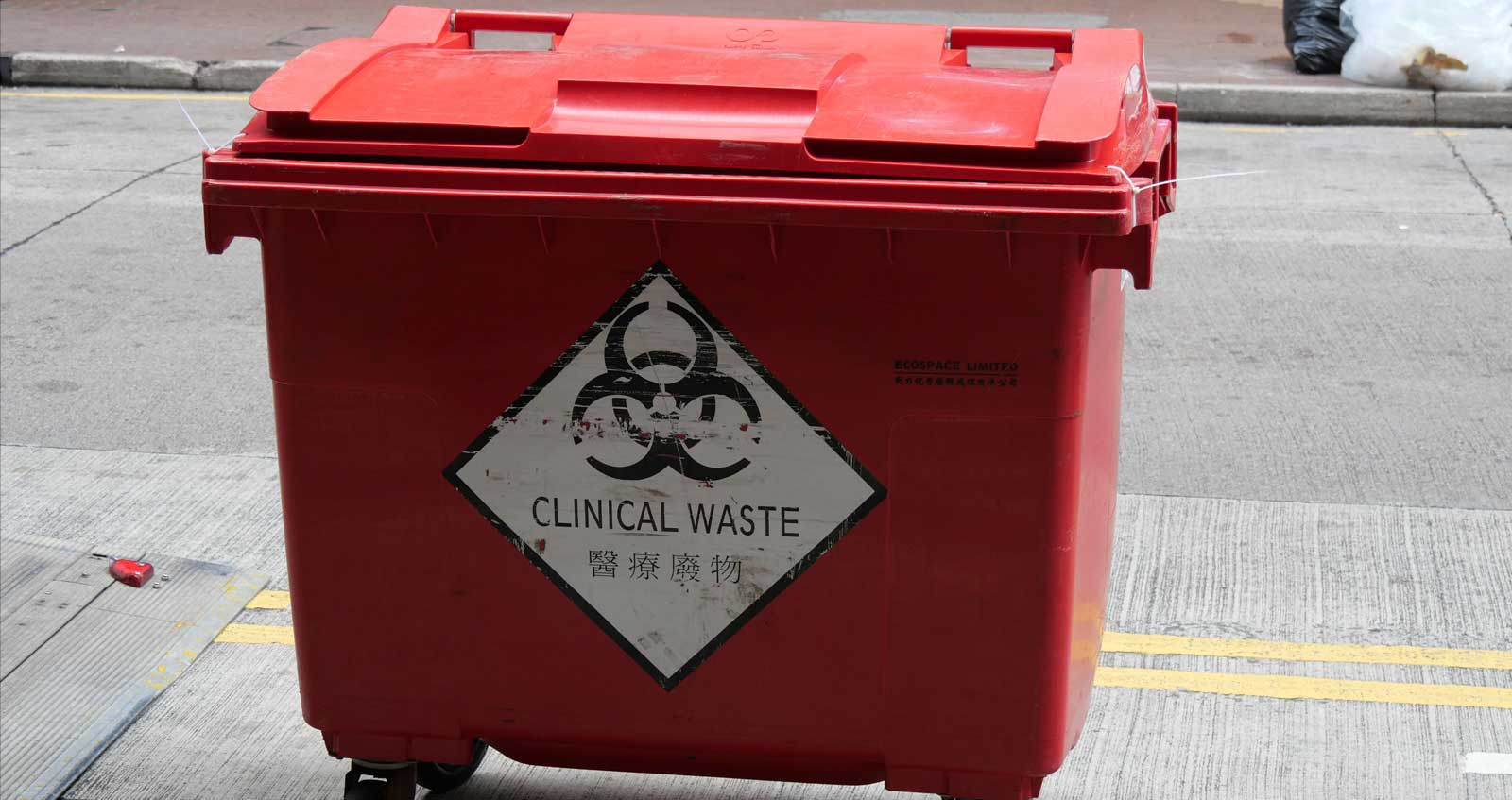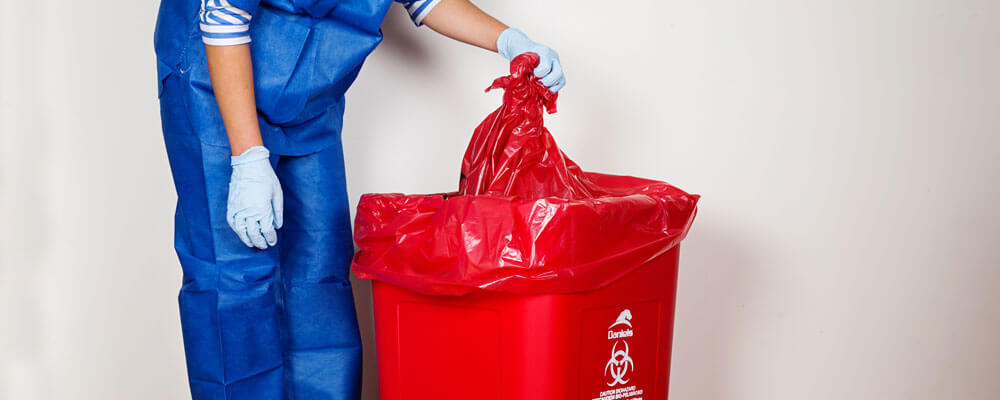Proactive Health Solutions: Choosing the Best Medical Waste Removal Near You
Wiki Article
Effective and Eco-friendly Medical Garbage Disposal Solutions
In the ever-evolving field of healthcare, the concern of clinical waste disposal stays a subject of paramount importance. As hospitals, clinics, and other medical care facilities strive to offer high quality person care, they should additionally address the challenge of effectively and sensibly disposing of their waste - medical waste removal. In an age where environmental sustainability goes to the forefront of public awareness, finding solutions that are both effective and ecologically pleasant is not just an issue of compliance but likewise a testimony to the commitment of medical care organizations in the direction of a greener future. From waste segregation methods to ingenious reusing efforts, this conversation will certainly check out the numerous techniques employed to tackle this pushing concern, leaving you intrigued and eager to check out the possible options that exist ahead.Waste Partition Practices
Effective waste segregation techniques are vital to guarantee the appropriate and risk-free disposal of medical waste. Medical waste, that includes products polluted with potentially contagious substances, have to be managed in a means that minimizes the risk of damage to both public health and wellness and the setting. Proper waste partition plays a critical role in achieving this goal.Waste segregation includes the splitting up of various sorts of waste based upon their features and prospective threats. This procedure makes certain that each sort of waste is dealt with and dealt with suitably (medical waste disposal services with WasteX). It begins at the point of generation, where medical care centers should have designated containers and containers for different waste groups, such as sharps, contagious waste, pharmaceutical waste, and non-hazardous waste
By setting apart clinical waste at the resource, doctor can protect against cross-contamination and minimize the threat of direct exposure to contagious representatives. This technique likewise facilitates the recycling and healing of certain products. Setting apart and recycling tidy plastics and glass minimizes the demand for raw materials and minimizes the ecological effect of clinical waste disposal.

Autoclaving and Sanitation Methods
In order to make certain the proper and safe disposal of clinical waste complying with efficient waste partition practices, healthcare facilities need to utilize autoclaving and sterilization techniques. Autoclaving is an extensively made use of approach that uses high-pressure vapor to sterilize clinical waste.This involves dealing with the waste with chemicals such as ethylene oxide or hydrogen peroxide, which kill microbes by interrupting their cellular framework. It is crucial to note that chemical sterilization requires proper handling and disposal of the chemicals made use of, as they can be unsafe to human health and wellness and the setting if not managed properly.
On-Site Waste Treatment Equipments
Health care facilities have carried out on-site waste therapy systems to attend to the disposal of clinical waste in a risk-free and effective way. These systems supply a practical and affordable remedy for taking care of clinical waste produced within the facility. On-site waste therapy systems make use of different modern technologies to dispose and deal with of clinical waste on-site, minimizing the need for transport to off-site centers.One frequently utilized on-site waste therapy system is the microwave modern technology. An additional system is the chemical sanitation technology, which entails treating clinical waste with chemicals to kill microorganisms and reduce its unsafe nature. medical waste disposal services with WasteX.
They get rid of the threat of clinical waste being mishandled throughout transportation, reducing the potential for contamination and exposure to dangerous materials. On-site therapy systems lower the general environmental impact of medical waste by minimizing transportation and the requirement for landfill space.
Recycling and Repurposing Initiatives
As medical care centers strive for lasting waste management methods, they are progressively discovering recycling and repurposing campaigns as a means of top article decreasing the environmental effect of medical waste. Recycling and repurposing initiatives involve discovering ingenious methods to reuse or transform clinical waste right into brand-new products or materials. This not only helps to decrease the quantity of waste that finishes up in burners or landfills however also lowers the intake of resources and energy needed for making new products.
One example of recycling in the healthcare sector is the reprocessing of single-use clinical gadgets. These devices, such as This Site medical tools or catheters, are generally thrown out after a solitary usage. Advancements in modern technology and stringent sanitation processes have actually made it possible to securely clean, disinfect, and reuse these devices several times. This not only minimizes the amount of waste created but also saves healthcare centers significant prices associated with acquiring brand-new tools.
One more recycling initiative involves the recycling of plastic containers, such as medicine bottles or syringe coverings. These containers can be gathered, arranged, and sent to reusing centers where they are refined, thawed down, and changed into new plastic products. This helps to conserve sources and lower the demand for virgin plastic manufacturing.
Along with recycling, repurposing efforts involve locating alternative uses for clinical waste. For instance, shredded paper waste from clinical records or product packaging materials can be repurposed as bedding product for pets or as insulation product (medical waste removal service). Organic waste such as food scraps from health care facilities can be composted and utilized as fertilizer in gardens or agricultural areas.

Renewable Resource Solutions
One efficient method to mitigating the environmental impact of healthcare procedures entails carrying out eco-friendly power remedies. Medical care facilities, such as healthcare facilities and centers, take in significant amounts of power for different functions, including lights, home heating, air conditioning, and operating medical equipment. By transitioning to check it out renewable resource sources, these centers can dramatically minimize their carbon footprint and contribute to a more sustainable future.

Carrying out eco-friendly energy services in healthcare facilities not only decreases greenhouse gas exhausts but also uses lasting cost financial savings. While the preliminary financial investment in renewable resource facilities may be higher, the long-lasting functional prices of renewable resource systems are considerably reduced contrasted to traditional fossil fuel-based energy sources. Additionally, sustainable energy systems are trustworthy and can give a undisturbed and steady power supply, making sure continuous medical care solutions even throughout power blackouts or emergencies.
Final Thought
In conclusion, implementing efficient and ecologically friendly clinical waste disposal solutions is important for keeping a sustainable health care system. By embracing waste segregation techniques, autoclaving and sanitation methods, on-site waste treatment systems, reusing and repurposing initiatives, and eco-friendly energy remedies, healthcare facilities can significantly minimize their environmental effect.It begins at the factor of generation, where healthcare facilities ought to have marked bins and containers for different waste groups, such as sharps, infectious waste, pharmaceutical waste, and non-hazardous waste.
In order to make sure the safe and appropriate disposal of medical waste following reliable waste partition practices, health care centers should use autoclaving and sterilization methods.Health care centers have executed on-site waste treatment systems to deal with the disposal of clinical waste in a effective and risk-free fashion. On-site waste treatment systems utilize different technologies to treat and dispose of medical waste on-site, lessening the demand for transport to off-site centers.
As healthcare facilities strive for sustainable waste management practices, they are progressively checking out recycling and repurposing efforts as a method of lowering the ecological influence of clinical waste. - medical waste removal near me
Report this wiki page